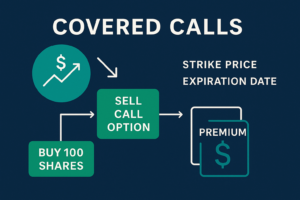Introduction: The Next Evolution in Drug Coverage
In Part 1 of this series, we examined how centralized drug coverage models emerged and why a new approach is overdue. Part 2 introduced enumerated node-based coverage as a concept that decentralizes and clarifies benefit structures among manufacturers, payers, and patients. Part 3 expanded on that with an exhaustive parameter library, demonstrating how systematically mapping out all coverage possibilities drives transparency and efficiency.
In this fourth installment, we pivot to a practical, technology-agnostic solution: an open-access database model. Rather than depending on closed, proprietary software, this approach enables comprehensive visibility into drug coverage details and fosters real-time collaboration among all stakeholders.
1. Why an Open-Access Database?
For decades, drug coverage negotiations have existed behind closed doors—leading to confusion, opaque pricing, and frequent misalignments between payer, manufacturer, and patient interests. By contrast, an open-access database facilitates:
- Full Disclosure Across Stakeholders
- Centralizing coverage criteria, formulary details, and contract specifications into one accessible location means everyone—employers, clinicians, manufacturers, and patients—can see the same data. This level of transparency can expose cost inefficiencies and encourage evidence-based decision-making.
- Permissions-Based Access
- Modern platforms like Airtable or Snowflake enable granular, role-based permissions. Employers might review drug coverage options, while clinicians can confirm prior authorization requirements. Sensitive data remains secure through carefully managed user access settings.
- Scalability and Flexibility
- Because these platforms operate in the cloud, adding more manufacturers, clinics, or employer groups is seamless. The database structure can expand or adapt without requiring overhauls to existing information technology infrastructures.
2. Transition from Centralized to “Shared” Coverage
Moving away from a top-down coverage system means reframing how data is stored, accessed, and shared:
- Traditional Model: Coverage details are housed in proprietary systems managed by a small circle of payers or pharmacy benefit managers and then distributed to employer groups. Contract terms, rebate structures, and formulary tiers are often hidden or complex to navigate.
- Shared Model: An open-access database acts as a central repository of agreed-upon coverage parameters, easily searchable by manufacturers, clinicians, and other authorized users. This reduces administrative friction and places key coverage details front and center.
By enumerating every possible node or “option” in the coverage continuum (as described in Parts 2 and 3), stakeholders gain clarity on exactly how coverage decisions are made, which drugs are included or excluded, and the rationale behind each choice. Some drugs will require more parameters than others, but this is very feasible with modern data tools.
3. Data Integrity and Permissions Management
While transparency is a central goal, confidentiality and regulatory compliance remain vital in healthcare. Implementing robust data governance strategies ensures that an open system does not jeopardize patient privacy or commercial confidentiality:
- Role-Based Access Control (RBAC)
- RBAC assigns specific permissions by user category (e.g., pharmacist, employer representative, manufacturer). This ensures only authorized parties can edit or view certain parameters, mitigating the risk of unauthorized changes or data leaks.
- Audit Trails and Compliance
- Cloud-based database solutions commonly include built-in audit trails. Every addition, edit, or export can be tracked in logs, preserving an immutable record of changes. This supports compliance requirements for regulations like HIPAA and GDPR. Dashboard monitoring could be leveraged in classes that are contributing to the most significant spend for specific populations
- Secure Data Partitioning
- Sensitive patient or contract data can be “partitioned” to keep it private while still enabling broader visibility of general coverage criteria. I’m not exactly a fan of serialization, but, for example, aggregate coverage and pricing details might be open for authorized users to see, while personally identifiable information (PII) is stored in encrypted formats.
4. Building on the Parameter Library
As explained in Part 3, an exhaustive parameter library lays out every coverage permutation—from straightforward diagnosis codes to multiple objective conditions or drug trials. Housing this library in an open-access database:
- Streamlines Updates
- Manufacturers can upload new coverage terms or contract amendments in real time. Once updated, clinicians and employers can view the latest details without enduring traditional lag times.
- Reduces Redundant Processes
- Repetitive tasks—like verifying coverage for each new patient—become faster. Clinicians can consult the database for near-instant confirmation of eligibility or prior authorization steps, eliminating repetitive paperwork and phone calls. There is even an NLP opportunity here for patients to be pre-screened for all eligible nodes, if desired.
- Facilitates Evidence-Based Decisions
- When coverage data is comprehensive and transparent, it becomes simpler to align formulary decisions with clinical guidelines and real-world outcomes. Payers and employers can reference objective criteria for cost-effectiveness, while clinicians see how each drug fits into broader coverage logic.
5. Future Directions for Collaborative Coverage
Establishing an open-access database is not just a one-time endeavor; rather, it serves as a foundational step in an evolving healthcare ecosystem. Potential next steps could include:
- Advanced Data Analytics and Insights
- Over time, the database could integrate analytic tools that help stakeholders identify cost-savings opportunities, manage drug utilization more effectively, and predict coverage trends and re-negotiate nodes.
- EHR Integrations
- By connecting the database to electronic health record (EHR) systems, clinicians can access coverage information directly within their workflow. This tight coupling accelerates decision-making and reduces manual processes, offering additional collaborative opportunities for ACOs and MCOs that have in-network providers and cost-savings models that drive towards maximally cost-efficient options
- Patient-Facing Transparency
- Eventually, patients should themselves gain access to real-time coverage details in a user-friendly interface,
Conclusion: A Transparent Path Forward
By building on the core principles outlined in Parts 1–3—centralization origins, enumerated node-based coverage, and exhaustive parameter mapping—an open-access database emerges as a practical method to enhance drug coverage clarity and collaboration. Stakeholders no longer have to navigate opaque systems or rely on secondhand information to set or understand coverage terms.
This transparent approach not only simplifies administrative tasks but also encourages data-driven decision-making across the board.




